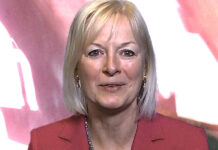
Both defaults and rerating of bonds are more likely in a high rate environment, and for trading desks this means finding efficient ways to handle the risks created for portfolio manager in both circumstances.
In the first quarter of the year secondary trading in default insurance, via single name credit default swaps (CDS) reached a five-year peak of US$1.1 trillion according to data from the International Swaps and Derivatives Association (ISDA). That was true for corporate as much as sovereign CDSs, with the number of non-sovereign names averaging ten or more trades per day, the level which is deemed ‘liquid’ by some authorities. ISDA observed in a report on the topic that this indicates the “episodic nature of CDS liquidity in response to heightened credit concerns.”
Advances in the electronification of the CDS market are helping traders to engage more effectively says Ted Husveth, managing director, US Credit, Tradeweb.
“Overall, the increase of electronification, automation and the introduction of new protocols in the CDS market has led to more transparency, reduced operational risks/costs, access to deeper pools of liquidity and enhanced price discovery,” he says.
When bonds are rerated, firms will need to find a path to moving assets into portfolios with the right mandate, either internally or in the market. Internal crossing of trades is still off the cards for US investment managers in most circumstances, despite being able to reduce the costs of moving securities between funds that are owned by the same firm.
However other models of trading, notably all-to-all, portfolio trading, and automated trading tools have found increasing popularity and allowed investment managers to trade against natural liquidity, to trade larger lists of bonds, and user lower touch engagement model to reach counterparties more effectively.
The growth in use of these tools could potentially reduce the impact of reduced dealer activity – a natural effect of increased market volatility.
A recent report by analyst firm Coalition Greenwich noted that MarketAxess’s all-to-all trading protocol, Open Trading saw a trade count in Q1 2023 up 27% from Q1 2022. Tradeweb’s portfolio trading volume reported an average daily net volume (ADNV) of US$1.3 billion in Q1 2023, up 36% from the same quarter last year.
Understanding the potential for improved market structure to support both dealers and buy-side traders to trade in and out of positions, and to recycle risk, will be of significant interest at FILS this week, increasingly so as resources on the desk become further stretched.
©Markets Media Europe 2023
©Markets Media Europe 2025













